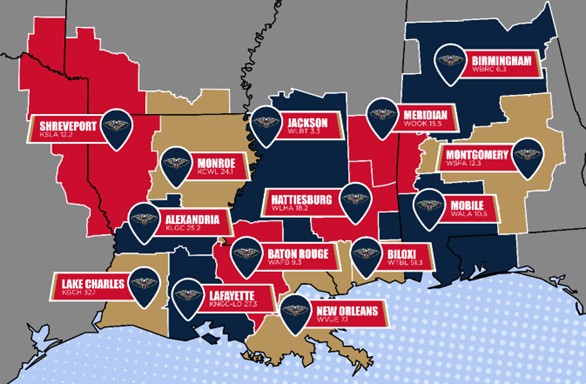Destination Repack: Not Enough Time, Money
WASHINGTON—The planets will have to align just so if broadcasters are successful in transitioning to new or shared channels following the spectrum auction with a limited amount of money and time.

That was the takeaway at Destination Repack, a conference sponsored by the law firm Wiley Rein, Wednesday, which assembled representatives from the FCC, lobbyists, vendors and broadcasters at their Washington headquarters. Discussions focused on planning, coordination, cooperation and dealing with the myriad red tape that comes with such a complex process. In short, there are enough moving parts to keep even the most experienced engineering consultants awake at night.
The FCC has given broadcasters affected in one way or another by the channel repack—which has been estimated at nearly 2,000—39 months to complete their transition, whether to a new channel or sharing a channel. Details of the phased in repack plan are available here.
The general consensus among most speakers and panelists was that the amount of time and money will not be enough.
“There are so many issues for full-power Class A stations,” said Jay Adrick, a consultant for GatesAir. “I think the biggest of these is how are we going to do all of this in 39 months and whether the $1.75 billion [budget] is going to cover it. I don’t think anyone originally thought that there would be this many stations that would be repacked. It looks like the $1.75 billion allotted will be woefully short.”
Broadcasters participating in the auctions are currently operating in a so called “quiet period” that prevents them from discussing specific details of their plans, which frustrates engineers involved in the process. “This quiet period is really tough on consulting engineers and vendors,” said Kevin Fisher, with the Smith and Fisher engineering consulting firm. “We’re not allowed to know anything, we can’t do any preliminary analysis.”
Representatives from the FCC encouraged broadcasters to provide specific, constructive feedback to the public notices that will be released in the near future regarding the repack process, particularly with the transition scheduling. “We are really looking for very specific comments during the input period, not just ‘we don’t like this,’” said Dorann Bunkin, chief policy counsel, video division & legal advisor, Incentive Auction Task Force at the FCC.
The professional video industry's #1 source for news, trends and product and tech information. Sign up below.
Patrick McFadden, associate general counsel with the NAB, emphasized the importance of planning ahead and ensuring that broadcasters have all their i’s dotted and t’s crossed well in advance of the three-month deadline for broadcasters to submit their plans after the transition schedule is released.
“You should get your cost estimates in as early as possible,” he said. “Include everything you’re going to need and make it as accurate and complete as you possibly can.”
As broadcasters head towards the repack, coordinating the transition with the move to the emerging ATSC 3.0 standard provides an “historic” opportunity for broadcasters, according to Dennis Wallace, with the engineering consulting firm Meintel, Sgrignoli & Wallace.
Final approval of the final sections of the 3.0 standard is expected early in 2017, according to Dave Siegler vice president of technical operations for Cox Media Group, adding that commercial launch is expected within “a couple years.”
“The FCC is considering a change to the rules to allow us to voluntarily use the physical layer of ATSC 3.0,” Siegler said and that ”there is a possibility of overlapping the 3.0 change with the repack. We think this would bring minimal disruption to the consumer and there’s a lot of value in that. It’s a challenge but it’s also an opportunity.”
Adoption of 3.0 could prompt more broadcasters to use single frequency networks as a distributed transmission system to fill in coverage gaps, which could help ease the transition to the repack.
“If we’re looking down the road to SFNs, that could easily play into the decisions that are made during the three-month period” said Fisher. “Give some serious thought about ATSC 3 and where you want your station to go.”
For equipment vendors, including antenna manufacturer Dielectric, the repack may mean new business but it will also require coordination among all affected broadcasters. “Get your orders in place so that the vendor can actually start to work towards the schedule as he proceeds to fill those orders,” said Keith Pelletier, general manager for the company. “That’s one of the reasons why we’ve said the phased-in schedule starts on day one. It’s going to be in the interest of everyone to get those orders in as quickly as possible.”
Tom has covered the broadcast technology market for the past 25 years, including three years handling member communications for the National Association of Broadcasters followed by a year as editor of Video Technology News and DTV Business executive newsletters for Phillips Publishing. In 1999 he launched digitalbroadcasting.com for internet B2B portal Verticalnet. He is also a charter member of the CTA's Academy of Digital TV Pioneers. Since 2001, he has been editor-in-chief of TV Tech (www.tvtech.com), the leading source of news and information on broadcast and related media technology and is a frequent contributor and moderator to the brand’s Tech Leadership events.

